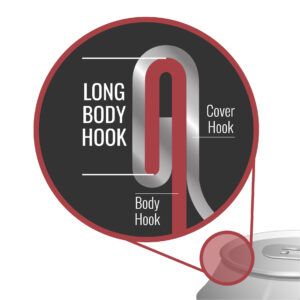Understanding Double Seam Can Defects: Types and Their Impacts
July 22, 2024
In the world of packaging, particularly in the food and beverage industry, the integrity of a can’s seam is crucial. The seam, where the can’s body and end are joined, must be perfect to ensure product safety, quality, and longevity. However, defects with a double seam are common issues that can compromise the contents. In this blog, we’ll explore the various types of can-seam defects, their causes, and how they can impact both manufacturers and consumers.
Types of Double Seam Defects
1. Incomplete Seam (False Seam)
What is it?
An incomplete double seam, often referred to as a false seam, occurs when the seam is not fully formed, leading to gaps between the can body and the end.
Causes:
- Misalignment of the can body and end during the seaming process
- Insufficient pressure during the seaming operation
- Worn or improperly adjusted seaming rolls
Impact:
This defect can lead to leakage, contamination, and compromised product integrity. For consumers, it poses health risks, while manufacturers face recalls and brand damage.
2. Droop
What is it?
Droop is a defect where the metal at the seam’s edge hangs downward, creating an uneven edge.
Causes:
- Excessive metal being fed into the seam
- Improper adjustment of seaming rolls
- Incorrect can end size for the body
Impact:
While droop might not always lead to immediate leakage, it can create weak points that may rupture under pressure, leading to potential contamination and product spoilage.
3. Vee
What is it?
A vee defect appears as a V-shaped gap or indentation in the double seam, typically at the seam’s side.
Causes:
- Incorrect alignment of the seaming rolls
- Excessive or insufficient pressure during seaming
- Damaged seaming tools
Impact:
This defect significantly increases the risk of leakage and spoilage, potentially leading to consumer complaints and financial losses due to returned products.
Cover Hook Defects
What is it?
When the cover hook exceeds or is below the Can manufacturer specification listed on the OEM Specifications sheet.
Causes:
- Misadjusted seaming rolls, primarily 1st operation
- Worn or failed 1st operation rolls
- Worn-out seaming chuck
- Excessively long body hook
- Material issue
Impact:
Cover hook defects can lead to unbalanced or fractured seams resulting in leakage or holding product.
Body Hook Defects
What is it?
When the body hook exceeds or is below the can manufacturer specification listed on the OEM specifications sheet.
Causes:
- Total machine pin height
- Individual station pin height (seaming chuck or lifter chuck plane)
- Excessively long cover hook
- Tight or loose 1st operation roll
- Spring pressure
- Material
Impact:
Body hook defects lead to fractured seams, unbalanced seams, and low overlap resulting in leakage or hold product
5. Seam Cutover
What is it?
Seam cutover is a condition where the seaming tool cuts into the double seam, creating a sharp edge and thinning the metal.
Causes:
- Excessive compound
- Improperly adjusted tooling (often an excessively tight 2nd operation or worn-out 1st)
- Overly hard seaming rolls
Impact:
Cutovers can cause immediate leakage and present a safety hazard to consumers due to sharp edges. For manufacturers, this defect leads to significant waste and potential liability issues.
Ensuring Seam Integrity
In conclusion, understanding and addressing the defects of a double seam is vital for the packaging industry. RSS MACLIN provides support in the maintenance of can seamer machines, proper training for operators, and stringent quality control measures that can help mitigate these issues. By recognizing the types and causes of these defects, manufacturers can take proactive steps to ensure their products remain safe, high-quality, and reliable for consumers.
If your business needs assistance with a can seam, double seam or can seamer machine, please contact us today.
The Benefits of Choosing an Expert Can Seamer Auditor
Previous BlogNext Blog Title
Next Blog




